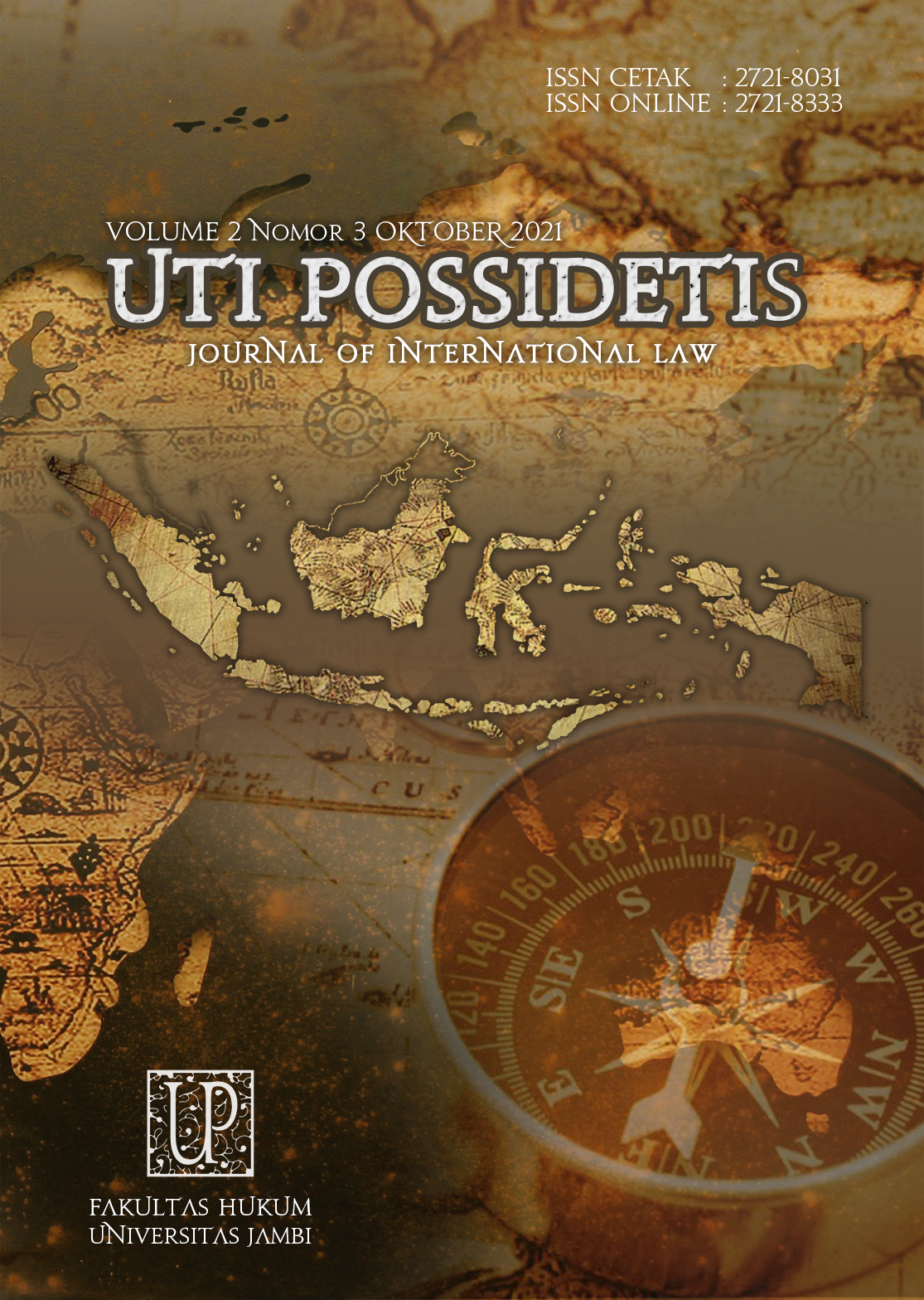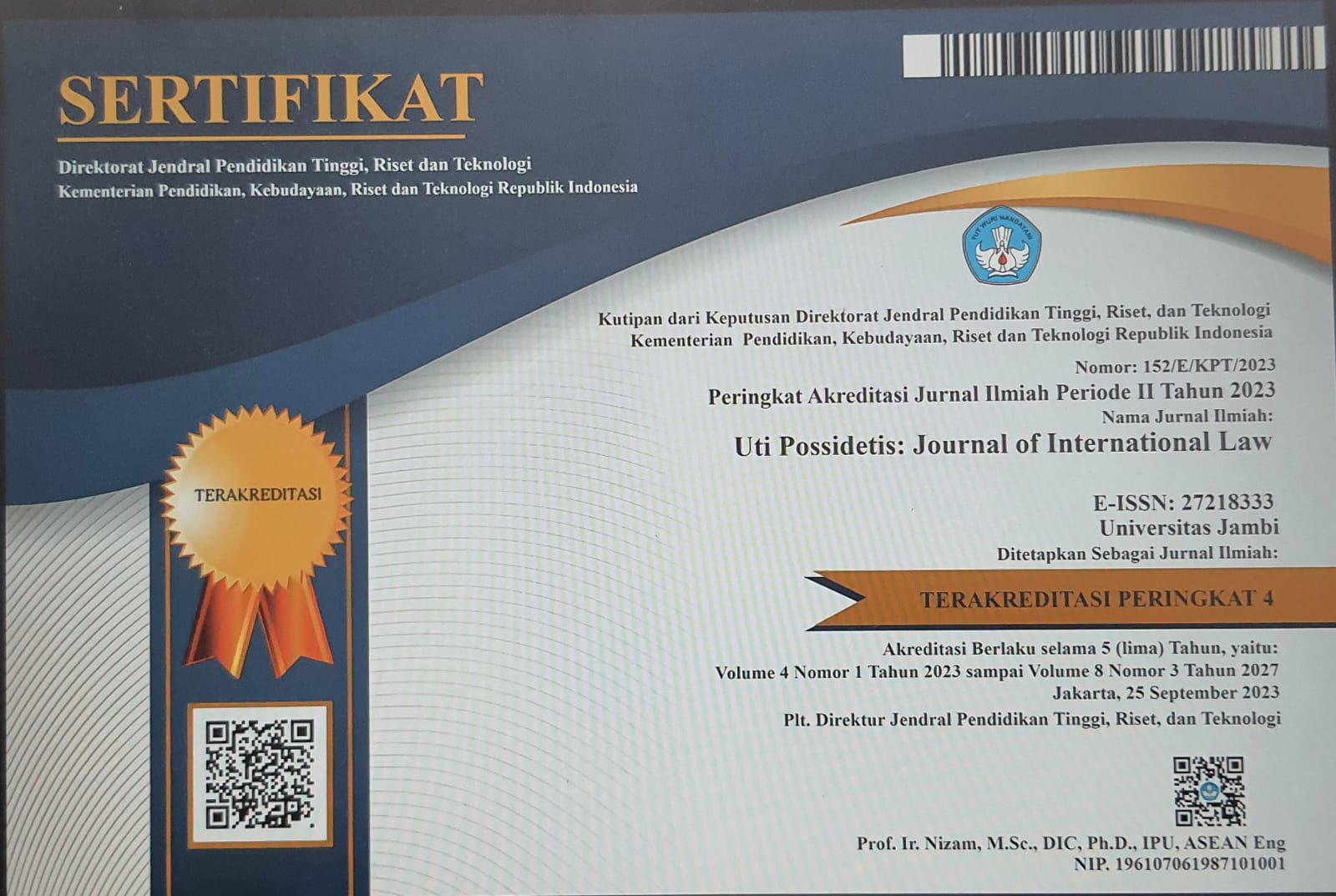Masalah Kemanusiaan hingga Lingkungan Hidup: Studi Kasus Konflik Nagorno-Karabakh (Azerbaijan Vs Armenia)
DOI:
https://doi.org/10.22437/up.v2i3.13304Keywords:
Armed conflict, environment, humanityAbstract
Armed conflict in a war is recognized as one way to resolve disputes between countries. However, armed conflict has negative impacts on humanity and the environment. This study discusses the conflict between Azerbaijan and Armenia which resulted in the deaths of 150 civilians and 5000 soldiers died and had a negative impact on the environment. Azerbaijan was accused that in this war it used White Phosphorus or fireworks with white smoke which carries a very dangerous chemical, it can cause disability or the extinction of wildlife forever. Meanwhile, the Armenians exploited the natural resources of the occupied territories without considering the superiority of population interests and changes in regional cultural heritage. The results showed that in the Nagorno-Karabakh conflict 2020 (Azerbaijan vs. Armenia) there were violations of international agreements in international environmental law and international humanitarian law that occurred as a result of the conflict which could be held accountable internationally. Then in relation to accountability due to armed conflict, Armenia and its affiliates in the occupied territory of Azerbaijan are responsible for acts of international violations
Downloads
References
Ambarwati, Denny Ramdhany dan Rina Rusman. Hukum Humaniter Internasional Dalam Studi Hubungan Internasional. Jakarta: Raja Grafindo Persada. 2012.
Arlina Permanasari. Et.al. Pengantar Hukum Humaniter. Jakarta: Penerbit International Committee of the Red Cross Regional Delegation office. 1999.
Daniel S. Papp. Contemporary International Relations : Frameworks for Understanding. Macmillan. 1988.
David. D Caron. The United Nations Compensation Commission for Claims Arising out of the 1991 Gulf War: the Arising Prior to Decision. Berkeley Law Scholarship Repository. 2004.
David Jensen dan Silja Halle. Protecting The Environment During Armed Conflict an Inventory and Analysis of International Law. Nairobi: United Nations Environment Programme. 2009.
Haryomataram. Pengantar Hukum Humaniter. Jakarta: Raja Grafindo Persada. 2005.
Huala Adolf. Hukum Penyelesaian Sengketa Internasional. Jakarta: Sinar Grafika. Cetakan Ketiga. 2008.
Jean Pictet. Development and Principles of International Humanitarian Law. Geneva: Henry Dunant Institute. 1985.
Mochtar Kusumaatmadja. Konvensi-Konvensi Palang Merah 1949. Bandung : PT Alumni. 2002.
Malcom N. Shaw. International Law. Fourth Edition. Cambridge University Press. 2014.
Arie Afriansyah. “Environmental Protection and State Responsibility in International Humanitarian Lawâ€. Indonesian Journal of International Law, Vol. 7, No. 2. 2010.
Arie Afriansyah. “International Environment Protection During Armed Conflict Case Study: Israel- Lebanon Conflictâ€. Jurnal Hukum dan Pembangunan. 2008.
Eka Martina Wulansari, “Perlindungan Hukum Benda Budaya Dari Bahaya Konflik Bersenjata.†Disertasi. Pascasarjana Universitas Pamulang. 2016.
J. Wyatt. “Law Making at the Intersection of International Environmental Law, Humanitarian Law, and Criminal Law: The Issue of Damage to The Environment in International Armed Conflictâ€. International Review of the Red Cross. 2010.
Lisette Braman, Pablo Suarez dan Maarten K. Van Aalst. “Climate Change Adaptation: Integrating Climate Science into Humanitarian Workâ€. International Review of the Red Cross. 2010.
Marie G. Jacobsson. “Sixty-sixth session: Preliminary report on the protection of the environment in relation to armed conflictsâ€. International Law Commision. 2014.
Michael Bothe. Et.al. “International Law Protecting the Environment during Armed Conflict: Gaps and Opportunitiesâ€. International Review of the Red Cross. 2010.
R.A. Malviya. “Laws of Armed Conflict and Environmental Protection: An Analysis of Their Inter-Relationshipâ€. ISIL Year Book of International Humanitarian and Refugee Law. 2001.
Sri Wartini. “Perlindungan Lingkungan dalam Hukum Humaniterâ€. Jurnal Hukum Ius Quia Iustum. 2003.
Sulaiman. “Sengketa Bersenjata Non-Internasional.†Jurnal Hukum dan Pembangunan. 2000.
UNEP Report. “Protecting the Environment During Armed Conflict: An Inventory and Analysis of International Lawâ€. 2009.
UNEP. “From Conflict to Peacebuilding: The Role of Natural Resources and the Environmentâ€. 2009.
World Conservation Monitoring Centre. “War Environmental Information Service: Impacts on The Marine Environmentâ€. 2008.
Yoram Dinstein. “Protection of the Environment in International Armed Conflictâ€. Max Planck Yearbook of United Nations Law. 2001.
ICRC, Convention on Prohibitions or Restrictions on the Use of Certain Conventional Weapons Which May be Deemed to be Excessively Injurious or to have Indiscriminate Effects (2004).
Protocol Additional to the Geneva Conventions of 12 August 1949, and Relating to the Protection of Victims of International Armed Conflicts (Protocol I), 8 June 1977.
Rio Declaration on Environment and Development 1992.
Stockholm Convention on Persistent Organic Pollutants 2001.
The Hague Convention (IV) respecting the Laws and Customs of War on Land and its annex: Regulations concerning the Laws and Customs of War on Land. The Hague (1907).
United Nations General Assembly, Convention on The Prohibition of Military or Any Other Hostile of Environmental Modification Techniques (1976).
United Nations General Assembly, Protocol for the Prohibition of the Use in War of Asphyxiating, Poisonous or other Gases, and of Bacteriological Methods of Warfare (1925).
Letter from the Permanent Representative of the Republic of Azerbaijan to the United Nations (A/72/508–S/2017/836), October 5, 2017.
Fosfor (P): Fakta, Sifat, Kegunaan & Efek Kesehatannya (amazine.co), “Fosfor (P): Fakta, Sifat, Kegunaan & Efek Kesehatannyaâ€. Diakses 1 Juni 2021.
Hizbullah Arief, “Mengurai “Ecocide†untuk menyelamatkan Lingkungan?†https://www.walhi.or.id/mengurai-ecocide-untuk-menyelamatkan-lingkungan. Diakses 31 Mei 2021.
https://ceobs.org/investigating-the-environmental-dimensions-of-the-nagorno-karabakh-conflict/#s3, Conflict and Environment Observatory. “Report: Investigating the environmental dimension of the 2020 dimensions of the 2020 Nagorno-Karabakh conflictâ€. Diakses 27 Mei 2021.
Internasional Committee of the Red Cross. “Customary IHL†https://www.icrc.org/customary-ihl/eng/docs/vl_rul_rule44. Diakses 25 Mei 2021.
Fosfor (P): Fakta, Sifat, Kegunaan & Efek Kesehatannya (amazine.co), “Fosfor (P): Fakta, Sifat, Kegunaan & Efek Kesehatannyaâ€. Diakses 1 Juni 2021.
Hizbullah Arief, “Mengurai “Ecocide†untuk menyelamatkan Lingkungan?†https://www.walhi.or.id/mengurai-ecocide-untuk-menyelamatkan-lingkungan. Diakses 31 Mei 2021.
https://ceobs.org/investigating-the-environmental-dimensions-of-the-nagorno-karabakh-conflict/#s3, Conflict and Environment Observatory. “Report: Investigating the environmental dimension of the 2020 dimensions of the 2020 Nagorno-Karabakh conflictâ€. Diakses 27 Mei 2021.
Internasional Committee of the Red Cross. “Customary IHL†https://www.icrc.org/customary-ihl/eng/docs/vl_rul_rule44. Diakses 25 Mei 2021.
Fosfor (P): Fakta, Sifat, Kegunaan & Efek Kesehatannya (amazine.co), “Fosfor (P): Fakta, Sifat, Kegunaan & Efek Kesehatannyaâ€. Diakses 1 Juni 2021.
Hizbullah Arief, “Mengurai “Ecocide†untuk menyelamatkan Lingkungan?†https://www.walhi.or.id/mengurai-ecocide-untuk-menyelamatkan-lingkungan. Diakses 31 Mei 2021.
https://ceobs.org/investigating-the-environmental-dimensions-of-the-nagorno-karabakh-conflict/#s3, Conflict and Environment Observatory. “Report: Investigating the environmental dimension of the 2020 dimensions of the 2020 Nagorno-Karabakh conflictâ€. Diakses 27 Mei 2021.
Internasional Committee of the Red Cross. “Customary IHL†https://www.icrc.org/customary-ihl/eng/docs/vl_rul_rule44. Diakses 25 Mei 2021.
Downloads
Published
How to Cite
Issue
Section
License
Copyright (c) 2021 Hanna Arinawati, Fathimah Azzahrah Putri, Shereena El Islamy

This work is licensed under a Creative Commons Attribution 4.0 International License.







